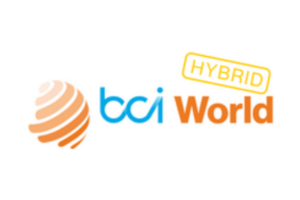 Whether you are on the journey towards operational resilience, organizational resilience, or business resilience, we can all agree that the goal is the same: to continue to deliver on our customer promise, no matter what happens. It is also important to note that these buzzwords are not mutually exclusive to any specific industry. While financial services firms as well as technology and data service providers are accelerating their journey due to new and evolving regulations, it does not change the fact that resilience is everyone’s job – no matter what industry you’re in.
Whether you are on the journey towards operational resilience, organizational resilience, or business resilience, we can all agree that the goal is the same: to continue to deliver on our customer promise, no matter what happens. It is also important to note that these buzzwords are not mutually exclusive to any specific industry. While financial services firms as well as technology and data service providers are accelerating their journey due to new and evolving regulations, it does not change the fact that resilience is everyone’s job – no matter what industry you’re in.
BCI World Hybrid 2022 Learnings
Fusion was fortunate to host a roundtable during the BCI World Hybrid 2022 conference in November. The topic and title that we chose is a popular one these days: Resilience is Everyone’s Job – Navigating Your Journey from Continuity to Resilience. Attendees consisted of resilience professionals from many different industries, including finance, manufacturing, technology, and more – further solidifying the notion that resilience (no matter how you’re aiming to achieve it) is very clearly something that matters in every industry.
Fusion’s Global Head of Financial Service Go-To-Market, Rich Cooper, and I went into the roundtable discussion hoping to learn from our industry peers, share a little thought leadership, and generally have a healthy conversation about how they’re demonstrating operational resilience at their companies. Boy, did we learn a lot, and we are very appreciative of the attendees who shared their input!
What we found was so profound that we wanted to share it with everyone. So, here are five trends that consistently came up during the roundtable and our attendee poll:
- Business Continuity Program Executive Ownership Remains Dispersed
- 43% of those polled said that their business continuity program was part of a more integrated strategy in their company like risk, while 36% said that their business continuity program still stands alone.
- The Relationship with Third-Party Risk Management Needs Some Work
- When asked about how the relationship with third-party risk management faired with their team, third-party ranked the lowest. In addition, third-party risk management was one of the top areas that those polled are looking to create a closer partnership with in 2023, only behind operational resilience.
- The Relationship with Risk is Stronger Than Ever
- Enterprise risk ranked lowest on the list of areas in which our respondents said that they’d like to build a stronger relationship with next year, but that is perhaps because they’re one of the strongest relationships already existing in their organizations today.
- Different Leaders = Different Goals?
- 83% of respondents stated that each resiliency team has different leadership as opposed to a single leader overseeing all of their resiliency teams. This highlighted even further the benefits of identifying and aiming program goals at achieving organizational priorities. This will also help to ensure alignment across all departments and provide executive level support.
- Operational Resilience is Still a Preferred Partner for 2023
- We asked respondents to rank the areas in which they’re hoping to create a stronger partnership with next year. The top response was for operational resilience followed by third-party risk management and IT disaster recovery.
Taking the Next Step Towards Resilience
When you think about operational resilience, it could feel overwhelming. Everyone is talking about it, some are jumping straight in, and others may think that operational resilience is just for regulated industries. It is important to note that the journey that you embark on can vary from organization to organization. The way that you approach operational resilience should be tailored to your organization. You have different skill sets, people, processes, etc. that differentiate you from your competition, and this journey should reflect that. That being said, you can leverage the five steps below as a guide to get started or to baseline where you are in your journey.
- Identify important services – This goes hand in hand with understanding your customer journey. Your organization delivers specific products and services to its customers that, in many cases, they rely on. Ask yourself: What are you delivering? What is the promise that you are looking to maintain? Then, prioritize the services that, if disrupted, would impact that promise.
- Map important services – Identify the necessary people, processes, technology, and information required to deliver each important business service. When you map that service delivery, you create that end-to-end structure of defining the infrastructure of the service. Ask yourself: What is the process chain that delivers this overall service? Of those processes, which ones are the most critical? This way, you hyper focus on what is most important and filter out the noise.
- Proactively mitigate risk – Identify vulnerabilities in the delivery of your important business services within an impact tolerance.
- Set impact tolerances – Set the maximum acceptable level for which disruption to an important business service can be tolerated. Ask yourself: At what point, in time and/or monetarily, does this service being disrupted impact our customers/our business beyond repair?
- Test and manage within tolerance – Test your organization’s ability to remain within your impact tolerances.
Resilience is not a one-and-done scenario – it takes time. It is an investment in your data foundation, an investment in understanding how your organization operates, and an understanding of what is important to your customers. By leveraging technology, it can help you bring your organization’s data to life in different ways. Resilience really requires an enforced culture, an efficient process, and digital transformation. It cannot be done overnight. With some helpful resources, an integrated and flexible platform, and an eager-to-network community, it can make all the difference in making that journey towards operational resilience easier and sustainable.






